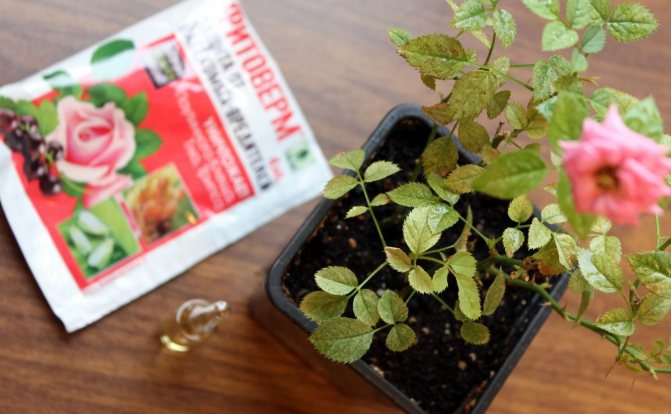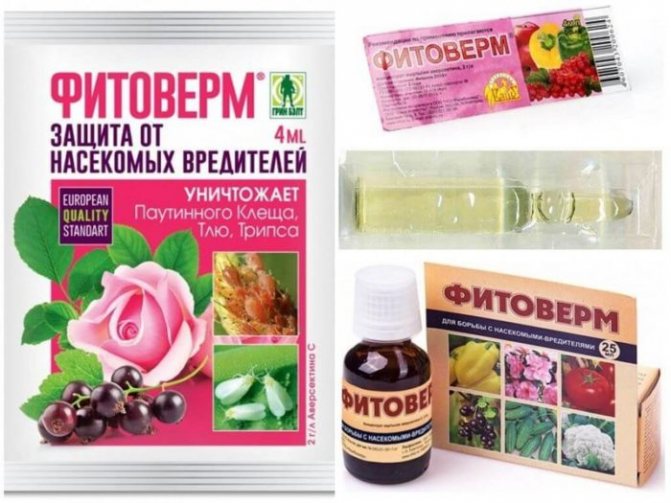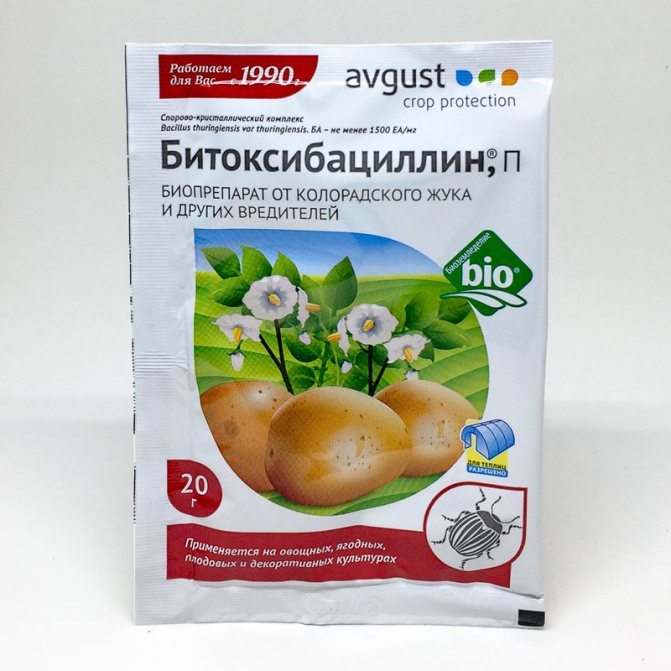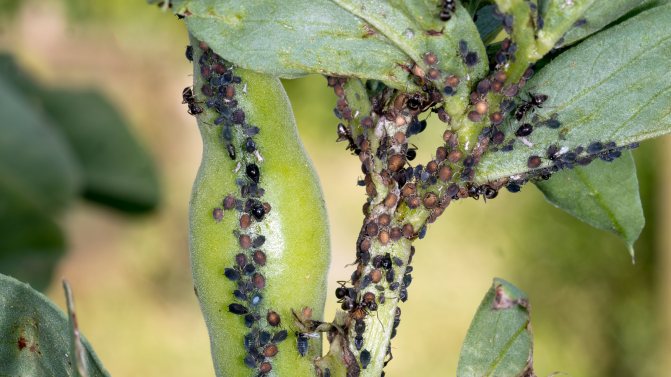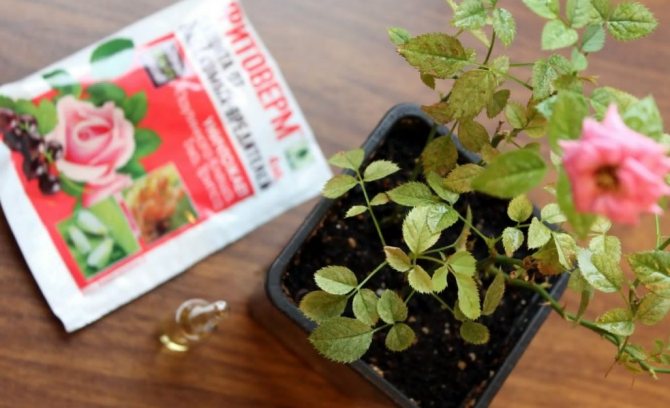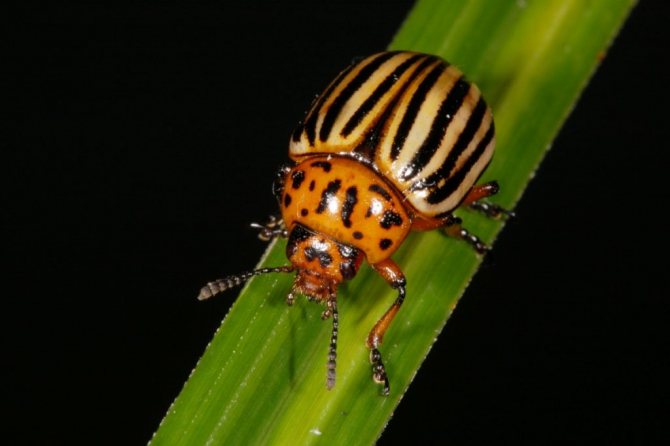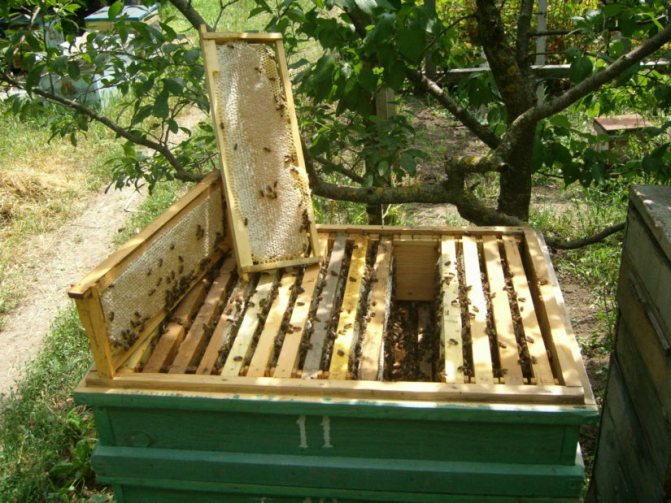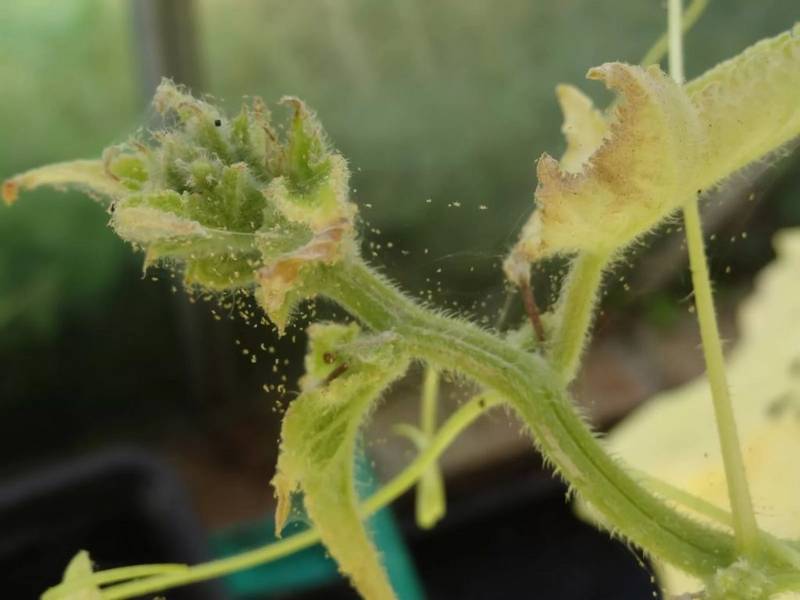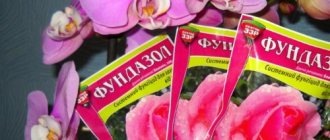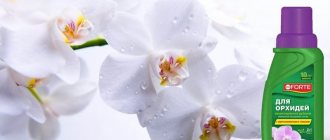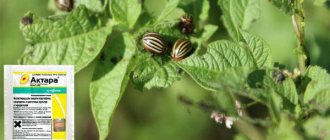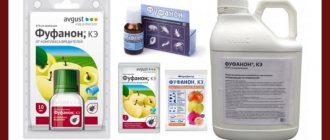Fitoverm is a biological product that has established itself as an affordable and easy-to-use insect repellent. It is suitable for processing not only horticultural crops, but also for the care of domestic plants. The insecticide is used in home plant growing to care for delicate flowers, it is not very toxic and has a quick effect. Due to the fact that the dosage of Fitoverm varies for different indoor plants, flower growers often have a question about how to dilute the drug.
For indoor plants
Many housewives are faced with diseases of pets. Azalea, orchid, rose, gardenia, begonia, fuchsia - whimsical to the conditions of detention. Violation of the microclimate leads to their weakening and infection.
To combat uninvited guests, a universal insecticidal biological product fitoverm for indoor plants is used. It is made from fungi that live in the soil. The active biological substance, aversiktin-C, enters the body of the parasite when it eats the processed leaves. Aversictin paralyzes the nervous system, causing the death of uninvited guests. Unlike pesticides, it does not accumulate in fruits.
Do not use the drug during flowering, it can cause the death of pollinating bees.
After spraying, insects die for 3-7 days, depending on the method of feeding. The bio-agent quickly decomposes. The decomposition period in soil is 30 hours, in leaves from 48 to 72 hours, in water for 72 hours.
Principle of action and special instructions for the use of Fitoverma
The active substance of Fitoverma is aversectin C. The insecticide is most often used to kill dangerous insects. The biological product has a paralyzing effect on pests, which is why they die 2-3 days after using the substance. The advantages of Fitoverma are low toxicity and no addiction of insects to the insecticide.
The duration of action is from 7 to 20 days. The agent does not accumulate in the cells of leaves and fruits. The drug can be used in hot weather, before and during flowering of fruit crops. The disintegration period of the substance is short, due to which the soil in which the plant is located is not contaminated.
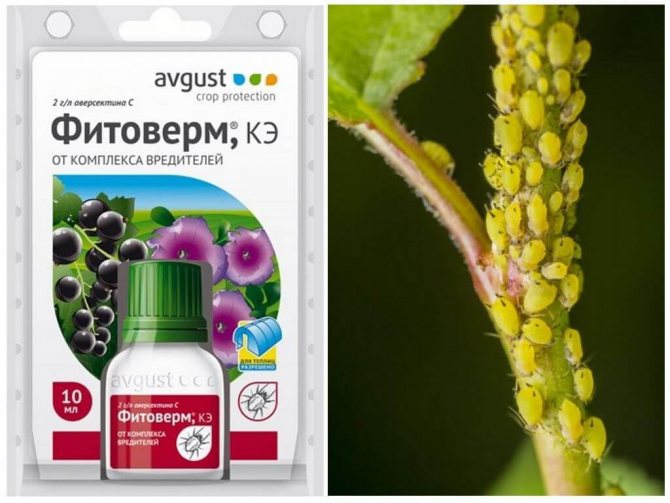
It should be noted that the prepared Fitoverm solution must be applied immediately after dilution. In addition, sprayers used for treatment quickly deteriorate.
Indications for processing
Fitoverm must be used if the following have been seen on indoor plants:
- Aphid. Yellow, green or black insects up to 5 mm in length. Parts of plants on which aphids start become sticky, often deformed, flowers and plant shoots wither.


Aphid - Whitefly. Small insects that weaken flowers look like butterflies. They appear on the back of the leaves, and when the flower is shaken they fly apart.
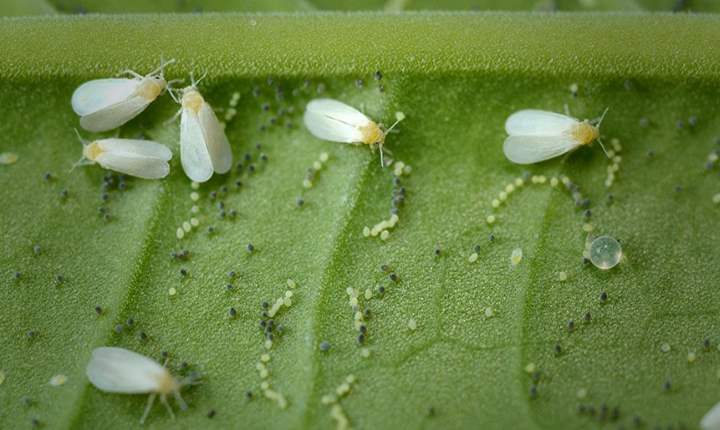

Whitefly - Thrips. Rarely visible to the naked eye, but leaves many light dots on the outside of the leaves. Pests also infect buds and flowers.


Thrips - Ticks. The plant is partially covered with a thin cobweb, the leaves lose their rich color and die off, they can become covered with white dots.
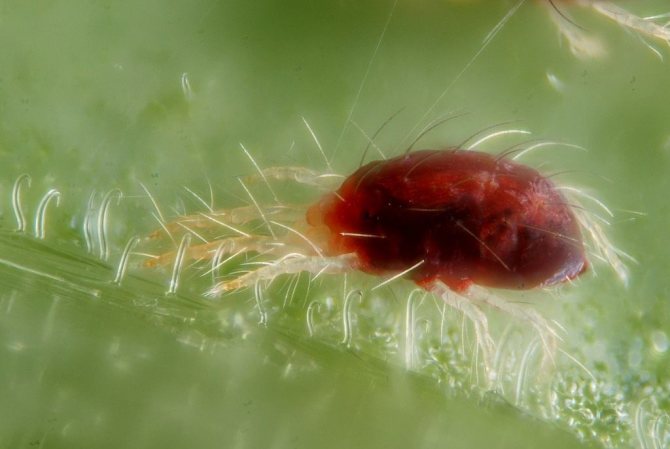

Common spider mite
Hazard class and precautions
Fitoverm belongs to moderately hazardous substances (3rd class). Avoid contact of the chemical with skin and mucous membranes before processing plants. The following personal protective equipment will help with this:
- latex gloves;
- mask;
- glasses.
It is advisable to dress in a suit or work clothes with long sleeves and trousers, and tie a headscarf or a hat on your head. You need to put on closed shoes on your feet. Safe working time with this chemical is 4 hours.


Orchid treatment with phytoverm
During processing, do not smoke, drink or eat food. Symptoms of poisoning are manifested in nausea and vomiting. In case of accidental ingestion of the drug inside the body, it is necessary to drink activated charcoal with a large amount of liquid, rinse the stomach, and call an ambulance.
Dispose of the remains of the unused product in the sewer or plant soil. Do not dispose of the chemical in a home sink or in an open body of water. After treatment, hands should be washed with soap and water.
Compatibility with other products
A chemical agent cannot be used in parallel with pesticides. It is possible to use other substances for plants a week after spraying them with Fitoverm.
Important!
The joint use of insecticide and substances with an alkaline reaction is also prohibited. Three days after applying the insecticide, the plant can be treated:
- fertilizers;
- growth regulators;
- organophosphates against insects;
- fungicides;
- pyrethroids.
Houseplant pests
If green pets wither for no apparent reason, a pest should be suspected. Inspect, pay attention to the color of the leaves, twisting and deformation, cobwebs, colored spots.
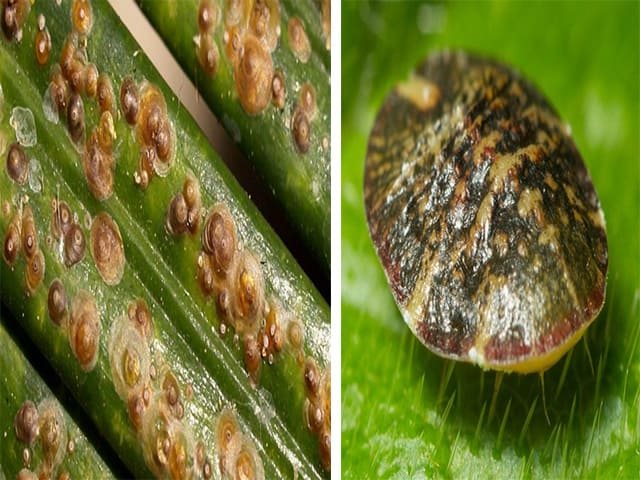

Shield and False shield
On examination, immobile brown tubercles resembling growths were found. This is a scale insect, an insect from the order of scale insects. Their size is from two to five mm. Like a leech, it sucks nourishing juices from the flower. The pet is covered with red-brown and yellow spots. Insects prefer to settle on flora with weakened immune systems. False shields are distinguished by their large size and the absence of a chitinous shell.
There are 2,400 species of scale insects in the family. Females lack legs and wings, and some species lack eyes. The worms that emerged from the egg move actively. The creatures parasitize on home flowers, fruit trees and shrubs, and even on coniferous trees.
Thrips
If incomprehensible white dots and streaks appear on a green pet, then thrips have started up on it. Insects from the order of the bladderworm or fringed winged. Their dimensions are 1-3 millimeters. Bubble-feet affect agricultural and ornamental crops, potted flowers. The creatures are fertile, the females lay eggs under the skin of the leaf, the worms move, leaving an intricate white pattern.
Thrips start in hot and dry weather. They do not like moist substrate and humid air.
Spider mite
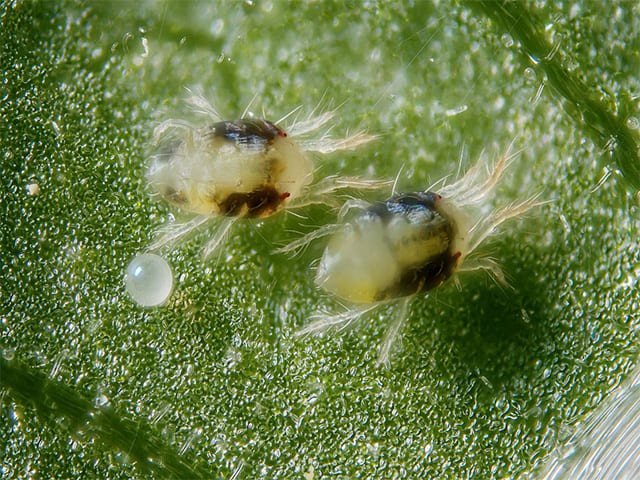

Infection of a pet with a tick is recognized by the cobweb on the shoots. The disease is deadly, after a short time the flora becomes covered with a sticky web, turns yellow and soon dies. Ficuses, citruses, orchids are especially susceptible. The tick affects young and weakened flora. With the help of scraps of cobweb, the "occupier" migrates to healthy flowers. Some mites parasitize the root system.
Mealy and root bugs
A dangerous pest of green pets. Has a size of up to five mm, looks like aphids. An inexperienced florist confuses these comrades. The worm sucks out the juice, leaving a discharge - dew dew.
The most difficult to find the root worm, it settles underground, on the roots. If you take the flower out of the pot, it is easy to see this pest. If a root worm is found, rinse the flower under a warm shower and transplant it into prepared disinfected soil.Treat the roots with Fitoverm bioinsecticide.
Sciarids or mushroom gnats
They look like harmless flying black flies. Adult sciarids do not parasitize flowers. The harm is caused by the larvae that gnaw the roots of the potted pet.
As a preventive measure, do not allow acidification of the substrate, do not use organic residues as top dressing - tea leaves, potato chips, eggshells.
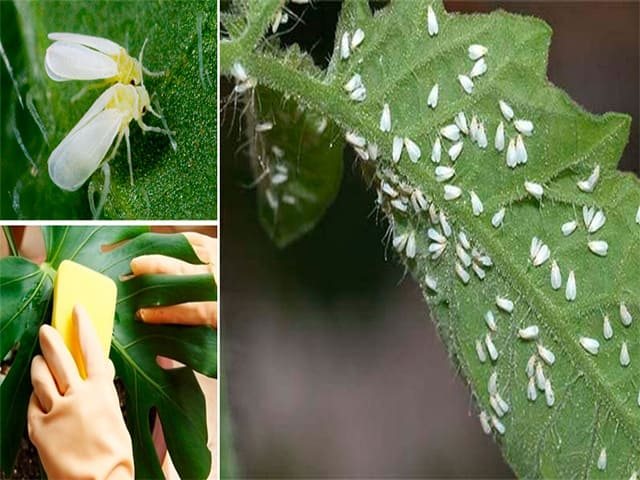

Whitefly
Easily confused with a moth, sizes range from 1 to 5 mm. The butterfly feeds on the juice of pets, piercing the skin of the leaf with a sharp proboscis. The flower is covered with honeydew excrement. The eggs are small and inconspicuous, the moth lays on the lower part of the leaf.
The technology of using Fitoverm brand preparations in the protection system of ornamental crops
Meshkov Yu.I., Candidate of Biological Sciences, Senior Researcher, State Scientific Research Institute of Phytopathology, Russian Agricultural Academy
Fitoverm preparations are currently widely used to protect agricultural and ornamental crops from pests. The active ingredient (aversectin C) is a purified natural complex containing a certain ratio of major avermectins A1a, A2a, B1a, B2a (about 90% in total) and minor avermectins A1b, A2b, B1b, B2b (about 10% in total). Avermectins obtained by biological synthesis during the fermentation of the soil-living actinomycete Streptomyces avermitilis belong to the class of macrocyclic lactones and have a number of unique properties. The high insectoacaricidal effect of Fitoverm is provided by the cumulative and synergistic action of all individual avermectins. The natural avermectin complex has at least two mechanisms of action. In neuronal synapses, avermectins B1 stimulate the release of gamma-aminobutyric acid, which leads to a change in chlorine current through dependent receptors. Avermectins A1 block Ca2 + -dependent chloride channels. Due to the double effect, the formation of resistant pest populations is slowed down.
Domestic drugs are produced in the following formulations - Fitoverm, CE (2 g / l), Fitoverm, CE (10 g / l), Fitoverm-M, CE (2 g / l), Fitoverm, P (2 g / kg), Fitoverm , P (8 g / kg). Fitoverm preparations have a wide spectrum of acaricidal, insecticidal and nematicidal action. Emulsion preparations are intended to combat spider mites (Tetranychidae), gall mites (Eriophyidae), as well as harmful insects from the orders: Homoptera (aphids, scale insects), Thysanoptera (thrips), Coleoptera (long-winged beetles) , Coccinellidae), Diptera (gall midges), Lepidoptera Lepidoptera (whiteworms, moths, moths, leafworms, silkworms, hawk moths) on vegetables and potatoes, on fruit and berry, flower-ornamental, citrus and industrial crops.
In the decorative floriculture of the closed ground, both cut flowers (chrysanthemum, alstroemeria, roses, lilies, tulips) and the seedlings of summer plants, pot crops are grown. Various harmful arthropods are capable of developing on these plants. The most dangerous of these are spider mites, thrips, as well as whiteflies and aphids. In addition to permanent pests, adventive pests introduced into the greenhouse with planting material obtained from abroad also play a significant role. Pests initially form localized breeding sites on trophic preferred plants, from where they are able to settle and colonize other plant species that were not previously characteristic of them. The variety of plant species, their habit, foliage, the density of the placement of pots, flowerpots on racks, under racks, in suspension significantly complicate the possibility of effectively suppressing the number of pests in greenhouse structures with potted crops.In monocultures, the intragreenhouse distribution of pests is not always uniform, which also requires repeated and careful pesticide treatment.
Along with the common spider mite Tetranychus urticae, the red spider mite Tetranychus cinnabarinus has gained significant distribution in protected ground. Often, these types of ticks form populations that are resistant to commonly used pesticides. Also, one of the intractable issues is the import into Russia on planting material (in particular, decorative roses, seedlings of potted crops) populations of spider mites, highly resistant to pesticides used abroad (and absent in our country). In recent years, the western flower thrips Frankliniella occidentalis Pergande, introduced to Russia from Eastern Europe, has become the most abundant and widespread species in greenhouses. This quarantine pest damages almost all plant species, especially in the generative phase. Its important difference from the native species of thrips is its resistance to a wide range of chemical remedies.
Fitoverm is a drug with intestinal action. Therefore, in the fight against small spider mites that successfully hide in the folds of the leaf blade, the interveinal space, under the canopy of the cobweb, as well as for the destruction of thrips, many phases of development of which secretly live in the thickness of the leaf blade or in the depths of the substrate, careful treatment of the plant surface is necessary. The maximum effect can be achieved when surfactants are used in a tank mix with Fitoverm. In addition, the reserves of avermectins that are created in the intercellular space are insufficient for prolonged protection against pests with a long period of aphagia (eggs, nymphal phase). Therefore, in some cases, multiple spraying with Fitoverm is necessary.
All this prompts the search for special additives to increase the effectiveness of Fitoverm. Currently, a modification has been created - Fitoverm M, which makes it possible to increase efficiency in the fight against a number of species of harmful arthropods, including the western flower thrips. A special preparation Fitoverm for flowers is being developed. At the same time, a reliable aid when using standard drugs is the use of adjuvants (substances used in combination with a drug to increase its activity).
Preventive measures to combat tetranic ticks in greenhouses consist of several agricultural methods. During the preparatory period, decontamination of greenhouse structures and soil, which represent the main places of winter mite accumulations, is carried out. Since the red spider mite does not show a pronounced diapause and must feed on plants during the cold period, it is important to provide measures related to the removal of weeds not only in the greenhouse, but also in the accompanying rooms.
It is well known that strict adherence to the permitted norms and the frequency of treatments contributes to the long-term preservation of the effectiveness of drugs used in the production. If the common spider mite prevails in the greenhouse industry, then the use of Fitoverma CE (2 g / l) at a concentration of 0.2% guarantees (subject to the optimal re-processing time) effective suppression of its number on flower and ornamental crops.
In some cases, the situation in a greenhouse complex can be more complicated. Thus, the red spider mite exhibits natural resistance to many acaricides, including avermectin-containing drugs. But the standardized technology of using Fitoverm brand drugs is applicable in this case. In particular, production tests of Fitoverma-M showed that at a working concentration of 0.2%, the mortality of mobile individuals of the red spider mite reaches 80-90%.The development of about 50% of the eggs is also suppressed - the formation of the embryo does not occur, by the 4th day the eggs dry out and shrivel. Repeated treatment with the drug after hatching of surviving individuals gives a higher (about 100%) protective effect.
The preparation Fitoverm M, EC (2 g / l) is also highly toxic for the larvae of the western flower thrips. Its activity is 2.2-2.8 times higher than the standard Fitoverm. Therefore, Fitoverm-M at a concentration of 0.5% is effective against western flower thrips to protect a number of flower and ornamental crops. On the first day, as a result of direct contact with the suspension, all larvae of the 1st instar die. On the 2-3rd day, the death of II instar larvae is associated with both acute poisoning as a result of direct contact with the drug, and with a lethal dose during subsequent feeding on the surface of the treated leaves.
Avermectin preparations effectively restrain the growth of thrips numbers for 2 weeks with a single use. But during this time, there is a latent accumulation of the pest, and the longer the interval between treatments, the greater the stock of the pest will be in the soil (pronymph and nymph), in the leaf parenchyma (egg) and in flowers (adults and larvae). When using avermectin preparations with a high contact effect, it should be borne in mind that the period of activity on the leaf surface for them is limited to 2-3 days. Young larvae hatched after this period no longer have contact with the toxicant. Taking into account that the development of larvae (1st and 2nd instar) is completed in 5, 6, 8 or 14 days at a temperature of 30, 26, 20 or 15 ° C, respectively, the period of re-processing in the summer should be no more than 5-7 days. This will suppress the demographic growth of the pest.
At NBC "Farmbiomed" a new preparation of Fitoverm brand is being developed, specially intended for use on ornamental crops to combat intractable pests, first of all, with red spider mites and western flower thrips. In the new preparation Fitoverm “for flowers”, due to further optimization of the component composition, the positive properties of Fitoverma-M were not only preserved, but also increased with the simultaneous elimination of the phytotoxic effect on some sensitive ornamental crops.
In terms of toxic properties, the new Fitoverm “for flowers” preparation surpasses the previously developed Fitoverm and Fitoverm-M preparations (Table 1).
Table 1. Mortality of the common spider mite of the resistant population (from greenhouse roses) when using Fitoverm preparations
| A drug | Drug concentration in working solution (%) | |||
| 0,1 | 0,2 | 0,5 | 1,0 | |
| Fitoverm “for flowers”, EC (2 g / l) | 100 | 100 | 100 | 100 |
| Fitoverm-M, EC (2 g / l) | 98,6 | 99,5 | 99,9 | 99,96 |
| Fitoverm, EC (2 g / l) | 79,0 | 87,0 | 95,0 | 97,8 |
Large-scale tests of Fitoverma “for flowers” were carried out in production conditions on the basis of decorative gardening factories. The new drug was found to be highly effective against a wide range of arthropods that damage flower crops. Below are data on its testing in the fight against resistant populations of spider mites.
To combat the red spider mite Tetranychus cinnabarinus, greenhouse roses were treated with a 0.2% solution of Fitoverma “for flowers”, EC (10 g / l) with a working solution consumption of 1600 l / 0.3 ha. A 2-fold treatment was carried out with an interval of 7 days. In terms of biological indicators, the red spider mite does not differ significantly from the ordinary spider mite. However, its various populations show great resistance to a number of modern drugs. This resistance is classified as natural in origin.
Within a week after the first treatment, the main part of the females and nymphs of the red spider mite died, while the intensity of mortality of eggs and hatching larvae was insignificant (Fig. 2). After the 2nd treatment, the overall mortality increases significantly.Within a month, all females, larvae and eggs of the red spider mite die, however, only a few nymphs remain. The biological effectiveness of Fitoverma “for flowers” reaches 93% in relation to mobile individuals of red spider mites and 100% for eggs.
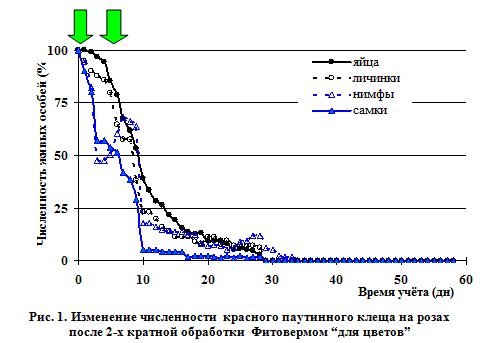

Fig. 1. Change in the number of red spider mites on roses after 2-fold treatment with Fitoverm “for flowers”
Further, in the treated greenhouse, the red spider mite was not detected within 58 days from the date of the 1st treatment. No phytotoxic effect was found in any of the experimental variants. When processed twice with the maximum consumption rate, the drug has a prolonged effect, which is associated with a deep effect on pest populations. According to the developed system of processing by Fitoverm “for flowers”, the ovicidal effect is most fully manifested, the risk of survival of the dormant phases of pests is reduced.
Adjuvants are used to increase the activity of acaricides and insecticides. One of these substances is Silvet® Gold, a universal organosilicone super-wetting agent (spreading agent). The active ingredient is heptamethyltrisiloxane (modified with polyalkylene oxide). It is supplied to our country. According to the Rosselkhoznadzor letter dated 28.08.2006, Silvet® Gold is not subject to state registration as a pesticide or agrochemical.
The mechanism of action of Sylvet Gold is to reduce the surface tension of water, which contributes to better spreading of working solutions of pesticides over the surface of plants (fot.).


Spreading of Fitoverma working solution using Sylvet Gold on the lower and upper surfaces of the rose leaf
Silvet Gold is recommended for use in optimal concentrations of 0.03-0.025%. Higher Sylvet Gold rates or an increase in water volume do not improve the coverage of the treated plants, but, on the contrary, creates the risk of excessive runoff of the working solution.
To increase the bioavailability of avermectins in order to increase their effect on harmful types of arthropods, studies were carried out on Fitoverma and Sylvet Gold mixtures. In such solutions, the surface tension decreases, which leads to an increase in adhesion, an increase in the penetration of the toxicant into the body of the target object. The use of an adjuvant is especially important in decorative floriculture. The epidermis of rose leaves is protected by a cuticular layer containing a large amount of waxes. Many plant species are heavily pubescent, which makes it difficult for pesticides to penetrate.
Studies were carried out to assess the activity of Fitoverma CE (2 g / l) in a tank mixture with Sylvet Gold on a spider mite population resistant to avermectins and on a population brought from abroad on planting material of roses (Fig. 1).
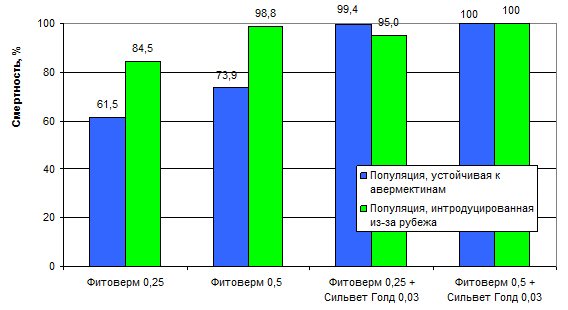

Fig. 1. Influence of Sylvet Gold on the increase in the activity of Fitoverm on different populations of spider mites
It was found that treatment with Fitoverm + adjuvant mixtures leads to a significant increase in the mortality of ticks (in comparison with pure Fitoverm). It is obvious that the Sylvet Gold spreading agent introduced into the working solution activates avermectins, giving them the properties of increased bioavailability. Resistant races of the common spider mite, resistant to avermectins, become more susceptible to the use of Fitoverm. The resistance index decreases 4.2-11.0 times for CK50 and 7.3-43.1 times for CK95.
Tests on a variety of flower and ornamental, including potted, crops have shown that the tank mixture Fitoverma (0.2-0.5%) and Sylvet Gold (0.03%) does not exhibit phytotoxicity. Two contiguous treatments with an interval of 5-7 days provide a prolonged protective effect against spider mites, restraining their reproduction for 4-7 weeks.
The technology of using the drug Rapsol in a mixture with Fitoverm has also been developed.The drug Rapsol is of interest in plant growing not only as an adhesive, but also as an insectoacaricide.
The surface-active preparation Rapsol contains 90% rapeseed oil and 10% emulsifiers. Rapeseed oil contains fatty acids: 50.0 erucic acid (C22); 47.0 lenoleic acid (C18); and 1.0% each of lignoceric (C24), palmitic (C16) and myristic (C14) acids.
Emulsified vegetable oils, in particular preparations based on rapeseed oil, can be classified as botanical pesticides. Due to the fact that oils are formally a food product, they do not require mandatory registration as a pesticide.
The main mechanism of action of the drug Rapsol is the adsorptive closure of the respiratory system - the spiracles of insects and the peritreme of tetranychid mites. The result is death from oxygen starvation. Another, no less important property of the drug is the adhesive interaction between insects and the surface of the leaf blade, which leads to the loss of locomotor and trophic functions of harmful organisms.
Observations have shown that emulsified rapeseed oil (Rapsol), after spraying the plants, evenly covers the body surface of arthropods (insects and mites). It was found that Rapsol at a concentration of 0.5% is highly effective (Fig. 2), and with an increase in concentration to 1.0%, mortality increases to 90%. During these treatments, part of the eggs is preserved, which contributes to the preservation of the pest population. The protective effect reaches 10-12 days.
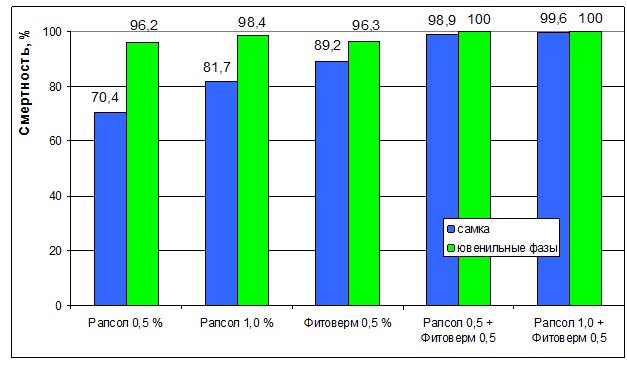

Fig. 2. Influence of Sylvet Gold on the increase in the activity of Fitoverm on the resistant population of spider mites
Rapsol can also be used in mixtures with various acaricides. In particular, in a study on testing tank mixtures Fitoverma CE (2 g / l) and Rapsol, the effectiveness of the action increased to 100% with an increase in the protective effect up to 20 days. The use of a tank mixture led to a more significant effect on the death of spider mite eggs. The ovicidal effect can be explained by the more intense penetration of avermectins through the chorionic micropyle through the oil film.
The use of Rapsol on roses is problematic - on some varieties and under unfavorable conditions for spraying, burns may occur on the leaf surface. But even on this indoor culture, the drug can find its place when it is used as an adhesive (to keep the working solution on the smooth waxy epidermis of the leaf) in small concentrations of 0.3%. At these concentrations, it probably should be added in a mixture with various preparations used to protect roses. In particular, a mixture of Rapsol with Fitoverm CE (2 g / l) at concentrations of 0.3% and 1.0%, respectively, was highly effective in suppressing the abundance of western flower thrips (Fig. 3).


Fig. 3. The influence of Sylvet Gold on the increase in the activity of Fitoverma on the western flower thrips
Thus, Fitoverm preparations are a reliable tool in regulating the number of harmful arthropod populations on ornamental crops. It largely depends on the agronomist what the consequences of the use of avermectin preparations will be. It is important to envisage the observance of all technological regulations, but in a number of cases it is also necessary to have a creative attitude to the use of means of protection for the entire variety of ornamental crops, which are now widely introduced into protected ground in Russia.
Indoor Plants Processing Instructions
As soon as you find a parasite, immediately isolate the plant from healthy pets. If this is not done, the insects will move to healthy flowers in the house.
Fitoverm will not help to get rid of the larvae of thrips, whiteflies and sciarids, as they develop in the soil and in the soft tissues of plants (thrips).
For the complete destruction of other "invaders" processing is carried out with an interval of 7-10 days.It is important for the flower grower not to miss the moment when adults hatch from the larvae, they should not lay eggs.
| Pest type | Breeding rate | Processing method | Multiplicity of treatments |
| Thrips, scabbards | 2 ml for 0.2 l of water | Spraying and rubbing the leaves with a cotton swab dipped in the preparation, with a period of 7-10 days | 2-4 times |
| Spider mite | 2 ml for 0.25 l of water | Should be treated as new insects appear with a period of 7-10 days | 2-4 times |
| Mealybug | 2 ml for 0.2 l of water | Treat every 5 days 3-4 times and completely destroy the pest | 3-4 times |
| Whitefly, sciarids | 2 ml for 0.2 l of water | Processed every 5-8 days, depending on the size and age of the plants | 3-4 times |
For orchids and violets, the following proportions are observed.
- For violets - 500 ml of liquid plus one ampoule of 2 ml.
- For orchids - 1 liter of liquid and 1 ampoule.
We will tell you separately how to deal with the root worm. They live in the soil and cultivation of the ground part of the flower will do nothing. Experienced growers recommend the following method:
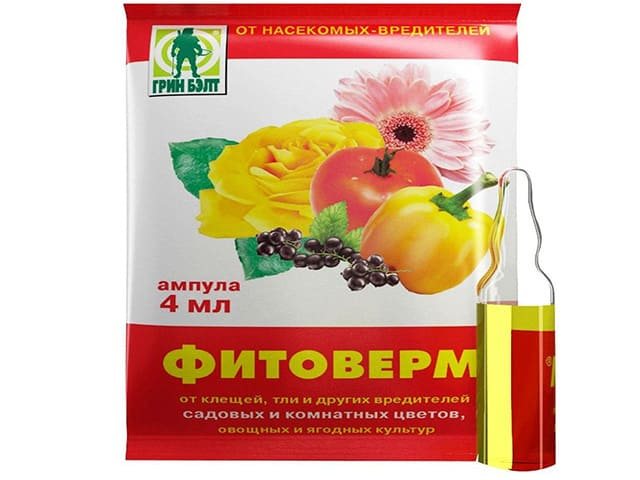

- Remove the flower from the pot and rinse under a warm shower.
- Prepare a solution of the drug "Fitoverm" at the rate of 2 ml per 0.2 l of liquid.
- Pour the concentrate into a double plastic bag and lower the infected plant. The temperature is not lower than 30 degrees.
- Make sure that the roots are in the bag with the solution. Tie a string around the bag.
- Keep the plant in concentrate for 3-4 hours. Then you need to transplant it into a new pot with healthy soil.
Characteristics of the preparation Fitoverm
Fitoverm is an organic insecticide and helps to get rid of various pests, hemoparasites and acarids, which have a very bad effect on many plants.
Most often, owners of land plots and indoor plants use this remedy against:
- Aphids;
- Thrips;
- Whiteflies;
- Moths;
- Leaf rollers;
- Colorado beetles;
- Mealybugs;
- Fruit-mongrel.
Important! Against the larvae, this remedy is useless, since they still do not know how to feed.
Active substance
Since Fitoverm is a biological preparation, its active ingredient is made from the metaplasma of fungi that live in the soil. The agent is based on a substance released from the metaplasm, which is called aversectin C.
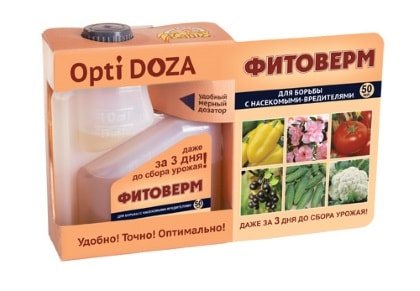

As soon as the pest absorbs the drug, even in the smallest dose, it is instantly paralyzed. In ten to twelve hours the insect loses its ability to move and feed. Two or three days later, the parasite dies.
As a result of the treatment of indoor plants with this preparation, insects die twice as slowly.
Indoor exposure to the drug can last up to three weeks. The tool works very effectively at elevated temperatures. In wet and cold weather, the protection period can be reduced to five to six days.
Release form
Fitoverm is a specific smelling concentrated emulsion, which is produced:
- in ampoules, the capacity of which is two, four, five milliliters;
- in bubbles from ten to four hundred milliliters;
- in five-liter flasks.
How to store it correctly
It is best to store this product in a dry, slightly cool room at a temperature of 10 to 25 degrees. Keep this medicine separate from food and medicine.
Ready solution cannot be stored.
For seedlings and greenhouses
The leaves of young seedlings are tender, they are easy to damage; to protect against insects, experts do not wipe the leaves, but use spraying. It is also necessary to process the lower side.
| Culture | Pest type | Amount of water in liters per 2 ml of the preparation | Number of treatments |
| Cucumbers, tomatoes, peppers, eggplants | Spider mite | 2 l | 3 treatments in 15-20 days |
| Aphid | 0.3-0.5 l | ||
| Thrips | 0.25 l | ||
| Cabbage | Whitefly caterpillars and scoop | 0,5 l | 2 times |
What is this drug?
This drug is an insecticide that can control over 20 types of pests.
Orchids are often affected by various pests and the phytoverm preparation is indispensable for them.


A simple and easy-to-use biological product that easily fights against the most difficult to eradicate and massive pests as:
- thrips;
- aphid;
- spider mites and many others.
They can easily treat plants at home. Moreover, it is very convenient for home use due to the fact that it has no smell.
it strong enough to kill insects instantly... It does not pollute the environment and decomposes very quickly in water or soil.
Pests of fruit and berry crops
Getting rid of uninvited guests of horticultural crops is much more difficult. It is important to properly alternate spraying with antiparasitic work during the year.
Pests of fruit and berry and vegetable crops include: spider mites, whiteflies, aphids, apple and plum moths, moths, leafworms, thrips, etc.
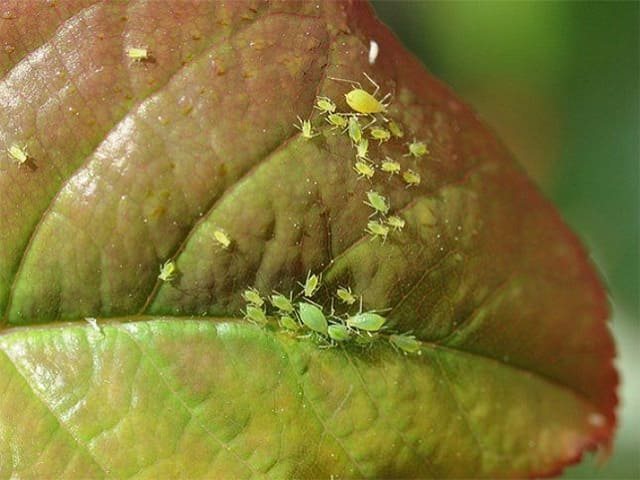

Aphid
It is a parasite on garden trees and shrubs. Prefers young, succulent shoots. Damaged leaves curl and dry out, trees are stunted. Shoots of horticultural and vegetable crops can be completely covered with aphids.
As a preventive measure, cut root shoots with aphid eggs. When large colonies appear, they are treated with insecticides.
Apple moth
Harm is caused by the baby moth - a caterpillar up to 18 mm long, pink in color and with a brown head. Caterpillars overwinter in cracks in the bark, in the soil. After the flowering of the apple tree, there is a massive butterflies years and egg laying. In June, caterpillars come out and take root in an apple. The fruits dry and then fall off. Caterpillars continue to live and feed in the carrion. With the onset of cold weather, they hide in the ground and cracks in the bark.
Leaf rollers
Damage is caused to orchards in the southern regions of fruit growing. Leafworms lay their eggs on the leaves. Up to 2 generations can develop in one year. Caterpillars harm by eating buds and inflorescences. Protection measure - spraying with a biological product "Fitoverm.
Appointment
Fitoverm is a broad-spectrum drug that is directed against sucking and leaf-eating pests. Such as:
- Plant mites.
- Colorado beetle.
- Shields.
- Sawflies.
- Leaf rollers.
- Fruit moths.
- Moths.
- Thrips.
- Aphid.
- Gall mites, etc.
The drug is used to combat ticks and scale insects that infect indoor plants. The acaricidal activity of the agent allows you to destroy the Schlechtendahl tick.
If indoor flowers were purchased with a scale insect or a scale insect, then you can get rid of them in a couple of treatments. Even beginner growers can cope with this.


Fitoverm protects during:
- 1-3 weeks - cultivated plants with a closed root system;
- 5-24 days - plants with an open root system.
- for indoor plants, the protection lasts longer, since the plants are not re-infested from the neighboring area.
Application in gardens
There are differences in the use of the product in the summer cottage and in the open field. It should be sprayed in the evening in warm, dry weather. The best temperature is 24-28 C. Ten hours after treatment, no precipitation should occur. The dilution rate of Fitoverma is detailed in the instructions for use:


A ten-liter bucket is suitable for breeding acaricide. Take two liters of liquid into it, pour out the contents of the ampoule and stir. Dilute the resulting concentrate to ten liters with water.
Breeding rates for garden trees:
- Against ticks, moths, leaf rollers - 1.5 ml per 1 liter of liquid. Consumption 3-5 liters per tree (depending on age and variety);
- Against apple and plum moth, scoops - 2 ml per 1 liter of liquid. Dilute 3-5 liters per tree (depending on age and variety).
Pros and cons
The main advantage of the drug is its low danger to humans. It also has a number of other advantages.
Fitoverm advantages:


not phytotoxic, completely safe for plants;- decomposes quickly;
- 96-100% effective against plant mites;
- able to operate at high temperatures;
- possible to use during flowering.
The disadvantages include:
- requires frequent and careful processing;
- ineffective in rainy weather;
- not used with other drugs;
- poorly wets leaves and flowers;
- the cost of the drug is higher than that of other drugs.
Precautions
The bioinsecticide has a 3rd hazard class. Handle the substance with overalls, goggles, and rubber gloves. Be sure to wash your hands after work. Dispose of the product according to the instructions.
First aid for poisoning:
- In case of contact with skin, wash off insecticide with soap and water.
- Drink 2-3 glasses of water before emetic reflex induction if the compound has entered the stomach. Drink enterosorbents after rinsing.
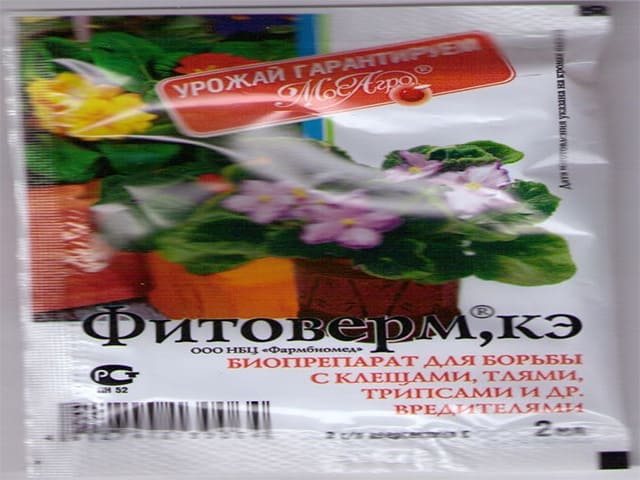

Contraindications for use
Fitoverm is not a chemical, therefore, has no contraindications for use. Safety precautions:
- Use closed clothing, gloves, goggles and a mask to protect the respiratory tract.
- Do not dilute in utensils that you use for storing or preparing food.
- During the treatment of the plant with the drug, you must not eat or drink, as well as smoke.
- After processing, you must thoroughly wash your hands and face with soap, rinse your throat.
- The drug is dangerous for fish and aquatic microorganisms. Do not spill the drug or packages into running water.
- Dangerous to bees during spraying.
Types of "Fitoverma" and its analogues
The manufacturer of the biological product is NIB "Farmbiomed" LLC. You can buy the products of LLC "Farmbiomed" in, "Neoverma", as well as in Internet stores. The bio-agent costs 20-250 rubles. for an ampoule or bottle and 3000-5000 rubles. for a 5 liter canister. Available in options:
- Fitoverm KE - protection against ticks, bark beetles, whites, thrips, weevils, etc.;
- Fitoverm P - to combat nematodes;
- Fitoverm M KE is a preparation with a contact adhesive for spraying. Distributes the product evenly.
Similar actions are possessed by:
- Gaupsin
- Aktofit
- Actellinus
- Akarin
Description, composition and characteristic properties of the drug
Fitoverm M was created relatively recently by Russian chemists from the Pharmbiomed company. The appearance of the product:
- liquid;
- no color;
- packaging: glass or plastic;
- does not have a pungent odor;
- diluted in water.
The drug helps to destroy parasites, insect pests. Acts through the intestines. Used on all types of soil. Suitable for outdoor and indoor use.
The composition allows you to use the product for all types of crops. The main component is aversectin C. This substance is of biological origin. Produced by special types of soil microorganisms.
According to the manufacturer, Fitoverm is a powerful weapon. 2 ml of the substance, when diluted in water (1 liter), contributes to the destruction of pests on a large plot of land. Shows high results as a preventive substance.
Does not pose a threat to animals and people, as it belongs to the 3rd class of danger... In most cases, when processing indoor plants, you have to take flower pots to the balcony. But Fitoverm M can be used in an apartment without this condition.
The release of the drug has been established. The manufacturer offers to buy in the following formats:
- Bottle. Volumes: 10-400 ml.
- Plastic container - 1-5 liters. Recommended for agricultural holdings where it is required to process a large area from pests.
- Ampoule - suitable for those who need to process indoor plants or planting material.
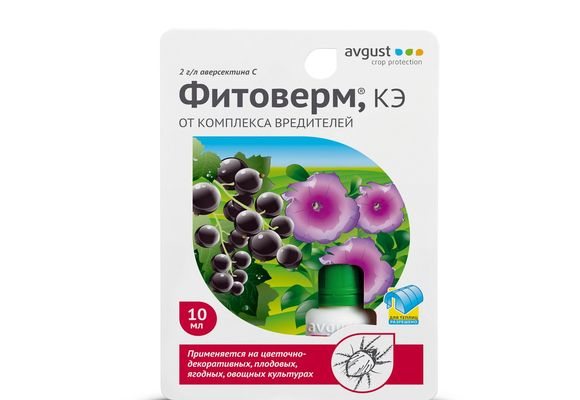

Sharing with other means
Storage of the drug in finished form is not provided. The opened packaging of the substance can be stored strictly according to the periods indicated on the packaging.After the expiration date, it is pointless to process crops.
Storage space for packaging: A room for agricultural material, away from fungicides and similar preparations. The temperature should not exceed 30 degrees Celsius. Children and animals must not be allowed near the substance. Although Fitoverm is not toxic, in a concentrated form it causes allergies, poisoning if inhaled.
It is prohibited to combine treatment with Fitoverm with other drugs. The minimum gap can be no more than 3 days.
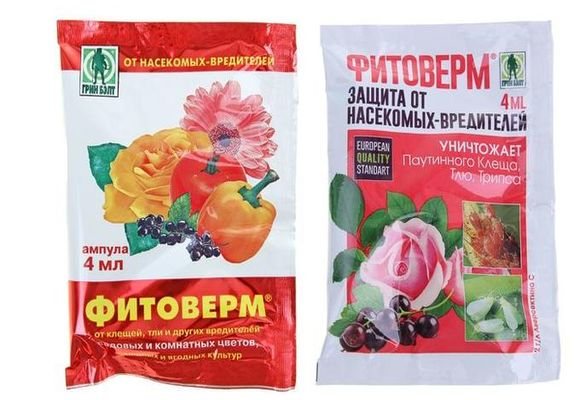

The rate of impact on the pest
6 hours after applying the product, gnawing insects stop feeding and for some time do not move at all. Then they die. As for sucking pests, the duration of the drug can last up to 12 hours. After this time, the insects no longer feed, but die after a few days.
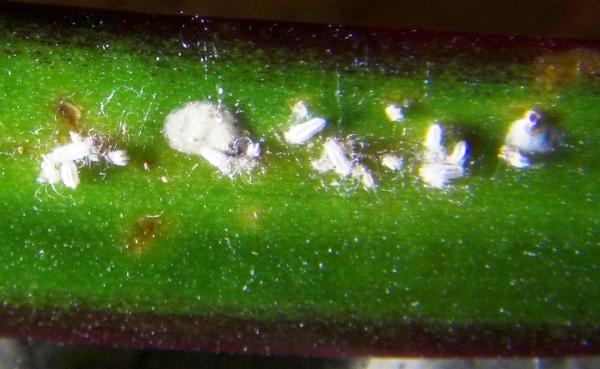

It will take about a week for you to completely get rid of the parasites. In this case, the leaves will remain deadly for them for another 3 weeks.
What pests does Fitoverm help against?
The range of effects on insects is very wide.
It includes the following pests:
- whitefly;
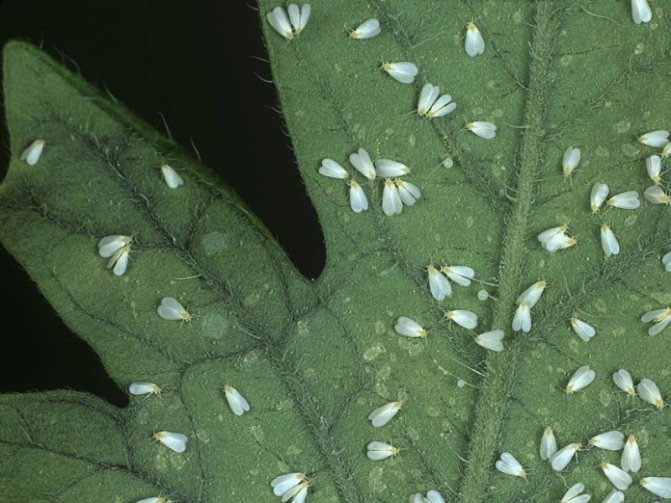

- moth;
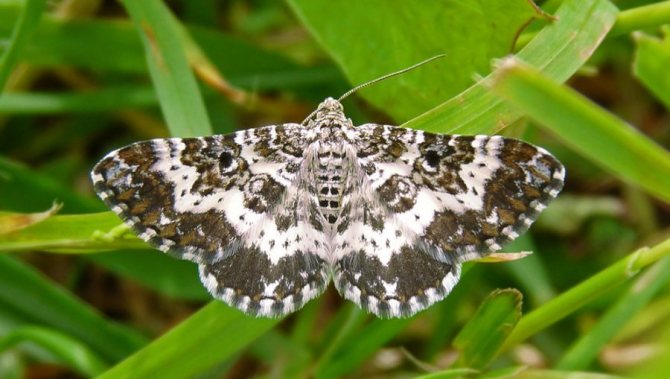

- sawfly;
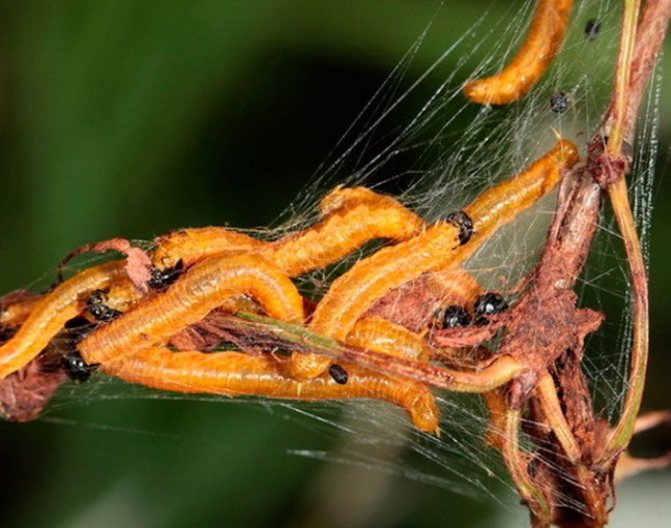

- thrips;
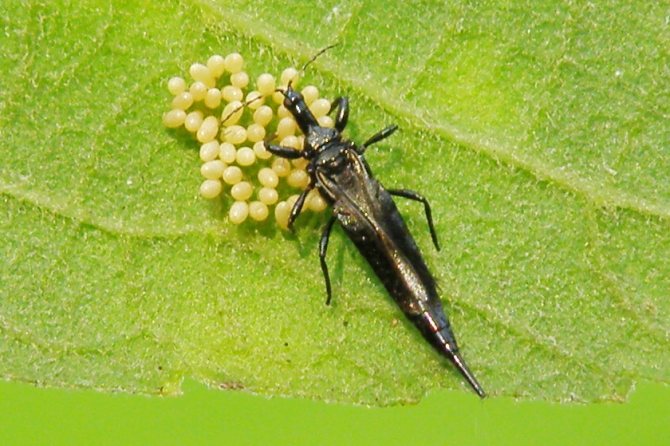

- leaf roll;
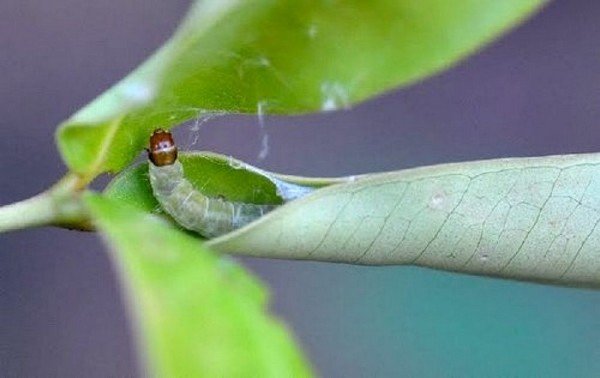

- aphid;


- Colorado beetle;


- other.
Important!
Fitoverm is powerless against insects that do not feed. These are larvae, pupae. To eliminate them, it is necessary to increase the temperature in the room artificially. This will make development processes faster.
Useful video
Watch a video about the use of Fitoverm against orchid pests:
In order for your orchid to be healthy and bloom beautifully, you need to responsibly approach the processing and feeding of the plant. Read the articles in which we will tell you in detail about such funds: Aktara, Epin, Zircon, Bona Forte, Fitosporin, succinic acid and cytokinin paste. You can also read about what fertilizers are used to make the plant bloom and what to use during flowering.
Storage conditions
If you have already cured your home flowers from gnawing insects, but there are several bags with the preparation left, ensure that they are properly stored. It is necessary to save the composition at a temperature of -15-30 degrees. The drug will retain its characteristic features for 2 years, but it is advisable to leave it in a dark, cool place. Do not leave medicines and, especially products, next to the phytoverm. If you have a small amount of the product diluted with water, it will most likely lose its properties the next day.
Indications
This tool is designed to destroy parasites such as:
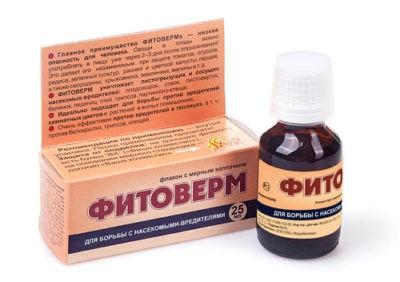

Colorado beetle;- white butterflies and cabbage;
- aphid;
- thrips;
- moth;
- spider mites;
- moths;
- leaflets;
- whitefly;
- mealybug;
- shield.
How to determine the presence of parasites
Examine the leaves on both sides and their axils, flowers and buds. The orchid is taken out of the pot, the substrate particles are carefully removed, the roots are washed in lukewarm water.
Advice! It is sometimes difficult to detect insects in the substrate. A trick is applied: at night, a piece of cucumber or apple is placed on the surface of the soil. In the morning, they check whether the parasite has crawled out onto the delicacy or not.
The healthy color of the root system is greenish-pearl - before watering, green - after it. The roots are thick, elastic, smooth. If black, brown, brown spots, soft slimy areas, yellowing are found, then the orchid is sick.
The damaged areas are cut off with a sharp sterile instrument, the sections are sprinkled with cinnamon, crushed activated carbon. If signs of pests have been identified in the soil, the plant is transplanted into a new substrate.
How to properly handle crops and plants?
It is necessary to prepare a working solution before processing cultures. You need to dilute the drug in a container that is not intended for cooking. Wash the container thoroughly after use.Experts recommend using disposable dishes to dilute the drug and choosing the right weather for spraying.
Processing is not carried out on rainy days or with high humidity. The optimum air temperature is between 25 and 34 degrees Celsius. It is best to spray plants with a spray bottle. During work it is necessary to control the even distribution of the product. This treatment can be carried out on abundantly growing plants.
The leaves of indoor plants must be thoroughly wiped with the prepared solution on each side. If the product is not completely used up, then the residues can be poured onto the soil in the pot. This is due to the fact that when spraying solution indoors vapors or spray may enter the lungs. Fitoverm should be used at least four times, with a break of 7-8 days.



